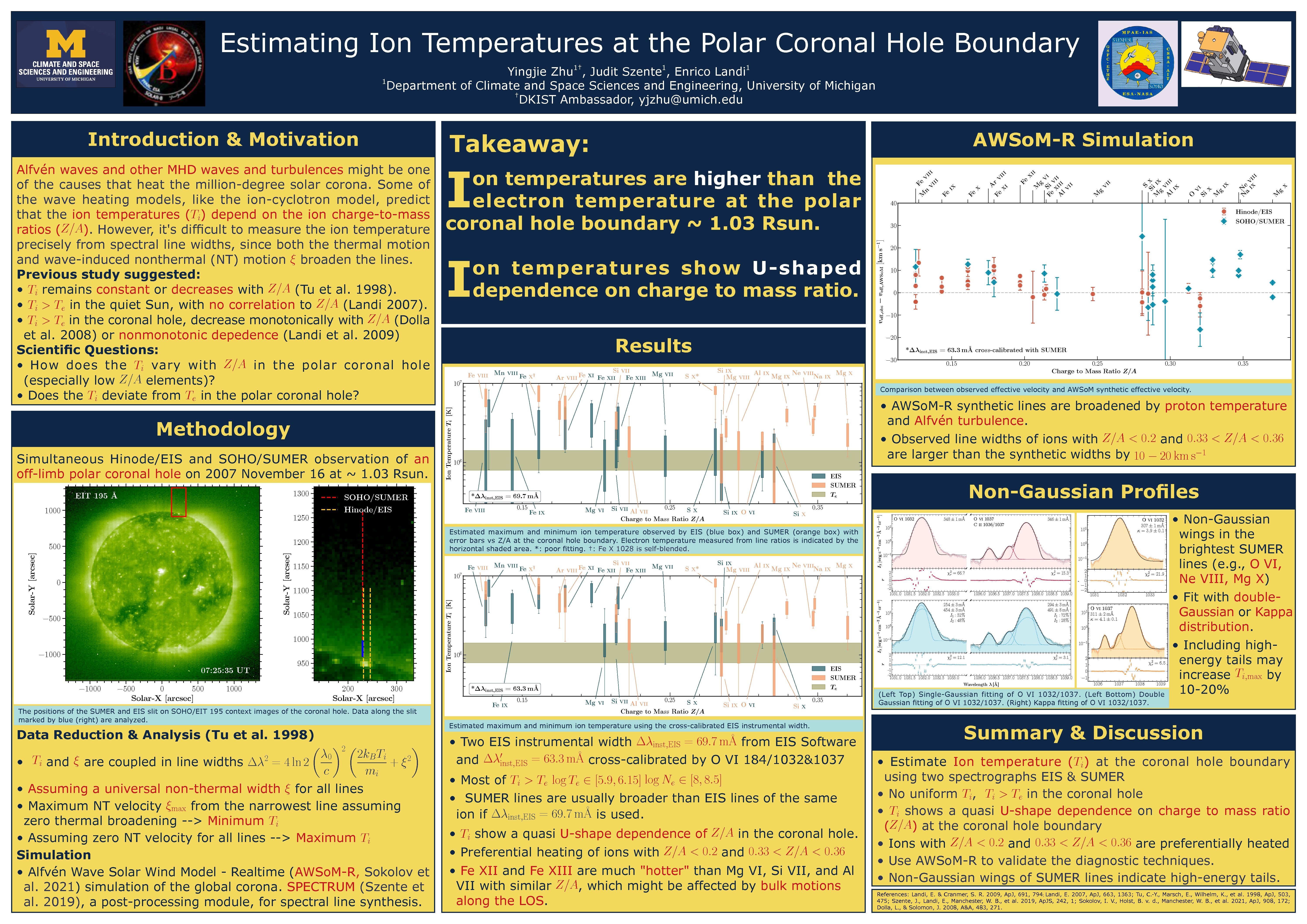Authors: Yingjie Zhu (University of Michigan), Judit Szente (University of Michigan), Enrico Landi (University of Michigan)
Physical quantities, such as ion temperature and non-thermal velocity, provide critical information about the heating mechanism of the million-degree solar corona. We provide new constraints to ion temperatures using EUV line widths, only assuming that the plasma non-thermal velocity is the same for all ions. We measured ion temperatures at the polar coronal hole boundary observed in 2007 by Hinode/EIS and SOHO/SUMER. The temperatures of ions with the charge to mass ratio (Z/A) less than 0.20 or greater than 0.33 are much higher than the local electron temperature. The measured ion temperature first decreases with the Z/A to 0.25 and then increases with the charge-to-mass ratio. We ran the Alfvén Wave Solar Model-realtime (AWSoM-R) and the SPECTRUM module to validate the ion temperature diagnostic technique and to help interpret the results. We suggest that the widths of hot lines in the coronal hole (e.g., Fe XII, Fe XIII) are also affected by the solar wind bulk motions along the line of sight. We discussed the factors that might affect the line width fitting, including the instrumental width and non-Gaussian wings in some bright SUMER lines that can be fitted by a double-Gaussian or a Kappa distribution. Our study confirms the presence of preferential heating of heavy ions in the coronal holes and provides new constraints to the coronal heating models.


